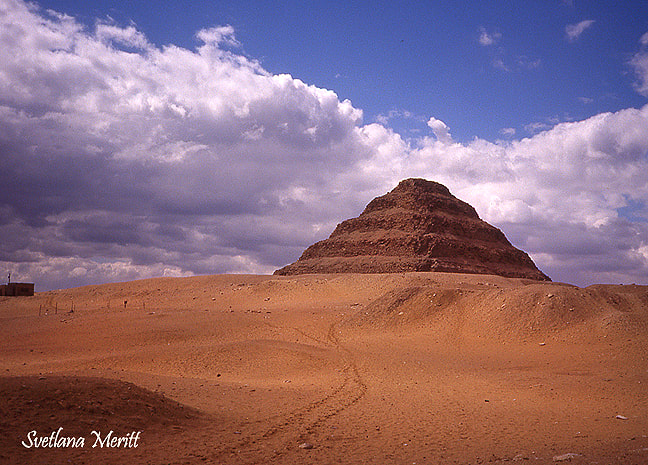|
To appreciate fully the achievement and importance of this pyramid, the first to be built in Egypt, you have to use your imagination. So imagine, if you will, the stepped surface completely clad with blocks of white limestone, shimmering with light in the vast, yellow sea of the Saqqara desert. And imagine a surrounding wall, also built of white limestone, designed in such a modern style that it served as inspiration for some ultra-modern public buildings in Arizona and Spain. This circular wall, more than a mile in circumference, enclosed other remarkable buildings: a funerary complex of King Zoser, several smaller pyramids, many tomb-chambers, and a causeway. All the features—carved hieroglyphs, bas-reliefs, a colonnade, rooms covered with unique blue tiles of exquisite beauty—were executed with superb craftsmanship.
And now comes the twist: this is the OLDEST stone complex in the world (after the Sphinx), the biggest ever built by a single ruler, AND it was carried out with such perfection of craftsmanship that was not surpassed in the succeeding 3000 years of Egyptian Pharaonic history. The funerary complex of Zoser appeared in full mastery and perfection of architecture and art in the history of Egypt. Which would be like starting the history of automobiles with a Ferrari! Ancient Egyptians believed that all their sciences, religion, writing, and architecture—in brief, their whole civilization—was transmitted from an earlier race by a group of beings referred to in ancient texts as Shemsu Hor, the Followers (Companions) of Horus. The Western esoteric tradition (which started with Pythagoras and Plato) attributes the origin of these beings to the Atlantean civilization, which was destroyed in a series of cataclysms around 10,000 BC. Walking around this funerary complex—in and out of the pyramids of Zoser and Unas, the exquisitely-carved tombs, through the colonnade and causeway—I couldn’t but register a completely different feel of this place compared with the Giza plateau and the three major pyramids there. Perhaps because so much more art work is preserved here, there was a feeling of richness of energy, an almost joyous, light purposefulness. Compared with the grandiose and removed impersonality of Giza, the Saqqara complex almost throbbed with beauty.
1 Comment
11/15/2022 05:26:44 am
Within song nearly major many. Pick anyone much.
Reply
Leave a Reply. |
Overview
All
|

